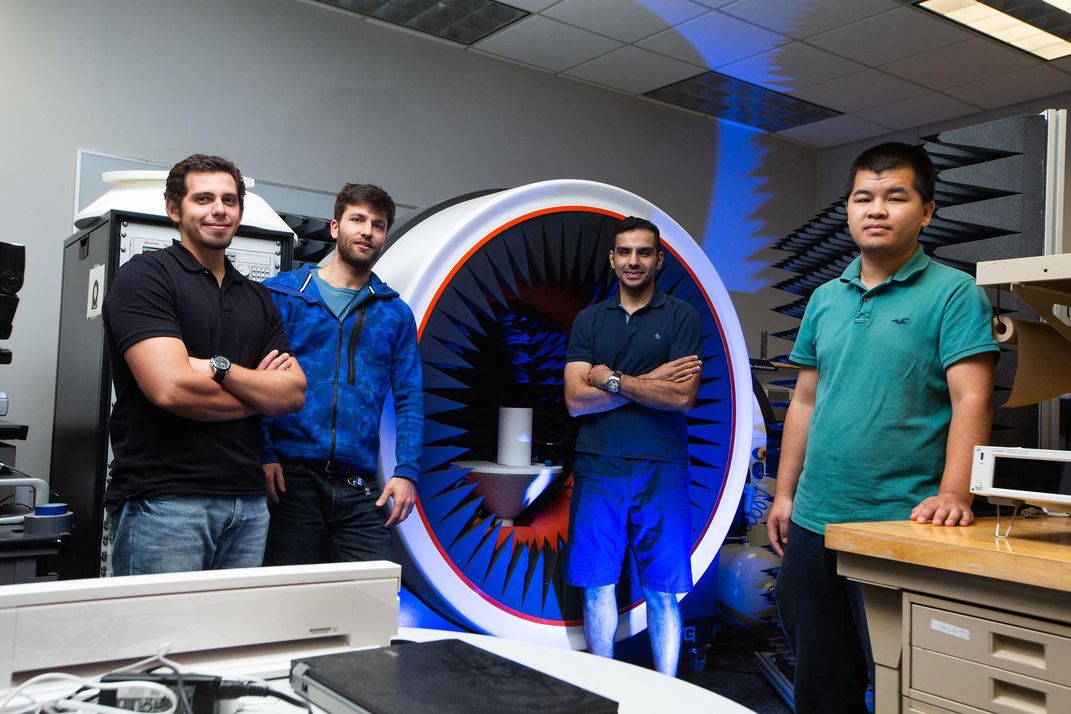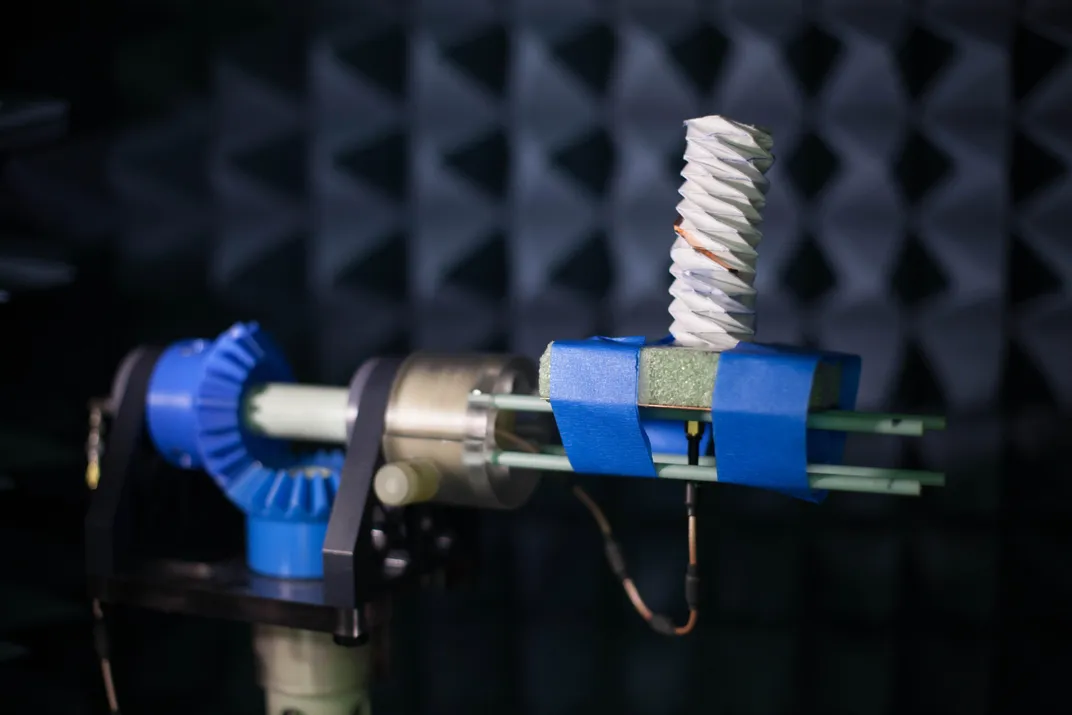These Satellite Antennas Were Inspired by Origami
At Florida International University, students help invent a new kind of communications device.
/https://tf-cmsv2-smithsonianmag-media.s3.amazonaws.com/filer/eb/0d/eb0d2f7d-b687-4692-b248-13f83bddf32e/01c_sep2019_10477901844_4e9d052c89_live.jpg)
A painter and sculptor since she was a child, Florida International University student Briana Gonzalez brings an artistic sensibility to her work at a new FIU center to design “origami” antennas. The lightweight antennas are designed to fold, like origami, for easy packing, making them useful for spacecraft and for soldiers who ordinarily lug heavy communications equipment. Once deployed, using simple mechanisms, the antennas can continue to change their profiles and performance. Such designs are more efficient than rigid antennas, and their unconventional nature—and aesthetics—appeal to Gonzalez, who is working toward a degree combining art, electrical engineering, and physics. “I think that [art] makes me think about problems differently,” Gonzalez says. “Maybe it makes me approach them from a different point of view…because I’m constantly activating my brain in a different way.”
To identify which origami antenna designs hold the most promise, Gonzalez writes computer code for algorithms that use a process akin to natural selection to eliminate unworkable configurations. She starts with a population of hundreds or thousands of possible options for a new origami antenna, then enlists a code to perform the inexorable Darwinian process. “Since we have a lot of [solutions], an algorithm will have the population go through a series of natural selection, kill off certain answers, pick parents, and then produce offspring,” she says. “This is going to happen over and over and over until we have a set of solutions or a population that we’re happy with. I’m not really dealing with anything biological—I’m just mimicking the patterns that we see in nature.”
Gonzalez writes her code in FIU’s new Transforming Antennas Center (TAC), founded last year by Stavros Georgakopoulos, a professor in FIU’s Department of Electrical and Computer Engineering. The center is funded by a $4.8 million grant from the Air Force Office of Scientific Research. Georgakopoulos, who joined FIU in 2007, directs seven undergraduate students, 12 graduate students, and two post-doctorate researchers developing origami communication and sensing antennas. He holds five patents on physically reconfigurable antennas.

Traditional antennas change their performance and operating frequencies through electronics. “We want to combine [electronic means] with physical reconfiguration, which means that the actual antennas change their shape through folding and morphing,” Georgakopoulos says. Their lightness and versatility are especially useful for small satellites and CubeSats.
Despite their shifting shapes, such antennas are designed to be simple: “Origami gives us mechanisms that can be easily actuated and deployed,” Georgakopoulos says. “When I send something into space, if I want to open the antenna, I don’t want to have something very complicated…because there are so many things that can go wrong.”

The ability of an origami antenna to reshape itself makes it more efficient in its basic function of transmitting and receiving. “Because you have a folding and unfolding system, we can operate the antenna—not just in the unfolded state—but we can operate it in other folding states,” Georgakopoulos says. “I can actually fold it a little bit and operate it, and fold it a little more, and operate it. So all these states can give us the ability to cover different frequencies. A single antenna could send and receive GPS data and at another frequency, send and receive video or weather data.” Changing the shape of an antenna can also convert it from an omnidirectional (radiating equally in all directions) to a highly focused directional antenna, pointing toward only one direction.
Origami antennas will use “smart skins” made from flexible plastic, copper tapes, conducting inks, and other materials. “It’s trial and error and learning on the fly,” says electrical engineering major Gian Carrara. “In broad terms, it goes from research and theory to creating a new prototype and then analyzing the structure and the antenna [on software] and then manufacturing. It’s a big puzzle that you have to master.” Carrara is working on a new multilayered process for origami antennas that uses rigid material sandwiched together and overlaid by a flexible material that allows the entire structure to easily change shape.
Besides being excited about the vast potential uses of origami antennas, Georgakopoulos also likes the unconventional thinking that designing origami antennas requires and the enthusiasm he sees in his students, many of whom are drawn to a more creative engineering environment. He relishes the idea of marrying two disciplines that are not ordinarily considered together: engineering and art.
This edition of A+S NEXT was published in cooperation with Florida International University’s College of Communication, Architecture + The Arts (CARTA).
Anna Radinsky is a senior at FIU majoring in journalism and sociology who aspires to share incredible stories from people of all fields and cultures.
